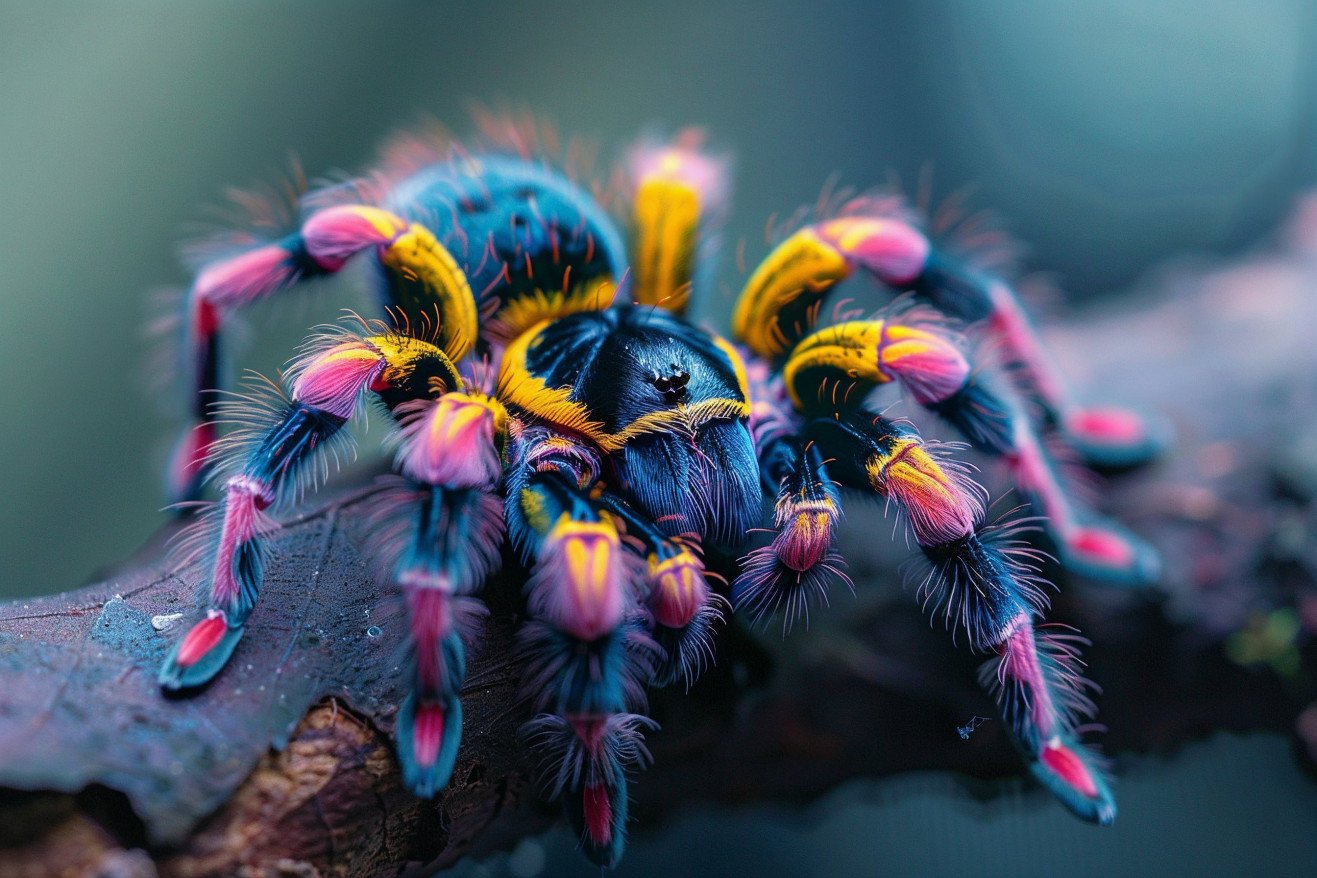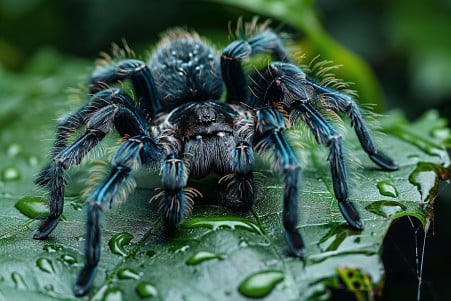Can Tarantulas Jump? Exploring the Locomotion Constraints of These Mythical Spiders
2 May 2024 • Updated 1 May 2024

Can tarantulas jump, or are these hairy spiders strictly ground-dwellers even when startled? Most species of tarantula do not actually jump or leap. While they can scramble quickly, tarantulas lack any specialized jumping legs or muscles that would allow them to jump vertically off a surface. Their movements are limited to crawling, aided by their strong grip provided by their numerous hairs and hooks on their feet.
We'll explore findings from arachnologists who have studied the natural histories of various tarantula species around the world. By conducting in-depth observational and taxonomical research, spider scientists have documented the locomotor capabilities of these incredible arachnids. You'll learn about the physical constraints and behaviors that prevent tarantulas from leaping to safety, even when faced with potential threats.
Can Tarantulas Jump?
Arboreal Tarantulas: The Only Jumpers
While most terrestrial tarantulas are incapable of jumping, some arboreal species have limited jumping abilities. As Spiders World explains, arboreal tarantulas from the genera Avicularia or Psalmopoeus can jump to a certain extent, especially when they are young and their bodies are lighter. The most famous jumping species are the Avicularia avicularia (pink toe) and Acanthoscurria geniculata, which are also mentioned in a TarantulaPet.com article.
Arboreal tarantulas, especially when they are young, can jump short distances of about 20cm (approximately 8 inches) when they feel threatened or are startled. As an Arachnoboards discussion explains, the genera Lampropelma, Poecilotheria, and Tapinauchenius also jump. In these arboreal genera, jumping is used to escape or move around their treetop habitats. However, their jumping abilities are still more limited than those of jumping spider species, which have evolved to jump in order to catch prey.
How Tarantulas Jump
Tarantulas that can jump use their powerful rear legs and the contractions of their abdominal muscles to propel themselves, according to the Medium article. Arboreal species may also use a dragline to help them avoid falling during jumps, according to the same article.
That said, tarantulas don’t have the specialized anatomical adaptations for sustained flight or true jumping seen in other spider species, according to the PNAS podcast. As a result, their jumping is limited to short, defensive leaps or as a way to get around in arboreal habitats. This insight into the mechanics of tarantula jumping helps to explain why it is so much more limited than the jumping behavior of more specialized jumping spiders.
Jumping as a Defensive Tactic: Risks and Rewards
In tarantulas, jumping is a last-ditch effort to escape a threat. According to the Tarantula Fact Sheet, tarantulas are extremely sensitive to vibrations that can alert them to the presence of predators, and they can also use their urticating hairs to deter predators. Jumping is a way for tarantulas to escape predators like lizards, snakes, birds, and even parasitic wasps that hunt them, as explained in the National Geographic article on tarantulas.
That said, jumping also has its own risks, including the risk of falling or jumping into an area that's more dangerous than the one they're trying to escape. The article on Tom's Big Spiders explains that while tarantulas can be great pets, they are still exotic animals with venom and defensive behaviors that need to be taken seriously. In captivity, pet tarantulas are less likely to jump than their wild counterparts because they face fewer threats. Knowing the risks and rewards of jumping can help tarantula owners make sure they're providing the right care and environment for these amazing animals.
Tarantula Jumping: How It Compares to Other Spiders
While jumping spiders are known for their jumping prowess, tarantulas are not as good at jumping and instead rely more on vibration and chemical cues to find their prey, according to the PNAS podcast. Jumping spiders have excellent vision, including the ability to see in color, which helps them with both hunting and jumping, according to the WebMD article. Some jumping spiders even display behaviors similar to rapid eye movement (REM) sleep, which suggests they experience a sleep-like state, according to the PMC article.
On the other hand, tarantulas are not nearly as good at jumping as other spiders like net-casting spiders, which can use their silk to hoist and catch large prey, according to the PNAS podcast. This context helps to show how tarantula jumping fits into the larger world of arachnids.
How Can Jumping Behavior in Tarantulas Be Controlled?
Jumping behavior in captive tarantulas is likely much less common than in the wild due to the lack of environmental stressors, as mentioned in the article on Tom's Big Spiders. Proper housing and handling can help reduce stress and the likelihood of a tarantula jumping. However, some health issues, such as Dyskinetic Syndrome (DKS), can lead to uncontrolled movements that may appear to be jumping, according to the DKS article on Tom's Big Spiders.
While there aren't specific training methods to control jumping in tarantulas, keeping them in the right type of enclosure and avoiding sudden movements can help, says the article on Tarantula Heaven. It's important for tarantula owners to know what causes jumping in tarantulas, including environmental, captivity, and health-related factors.
Conclusion: Putting Tarantula Jumping in Perspective
Although most tarantula species are not capable of jumping, some arboreal species have evolved the ability to jump as a defense mechanism or to aid in locomotion. Jumping is a last resort for tarantulas and is less specialized than in jumping spider species. The frequency and effectiveness of jumping in tarantulas can be influenced by environmental, captive, and health-related factors.
Responsible tarantula care involves awareness of the risks, benefits, and management of jumping behavior. This article has offered an in-depth look at tarantula jumping abilities, behaviors, and adaptations in the context of the broader arachnid world.


